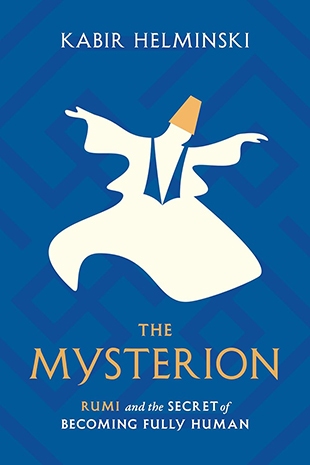Kabir Helminski is a Shaikh of the Mevlevi Order of Sufis, which traces its inspiration to the thirteenth century Persian poet and mystic Jelaluddin Rumi. A translator of Sufi literature and Rumi’s poetry, Helminski is also a Qur’anic scholar and Muslim educator. He is profiled in S&P’s Living Spiritual Teachers Project and has presented numerous e-courses through the website.
Helminski has practiced what he calls “applied spirituality of Sufism” for more than 50 years with a special interest in applying it to the mentality, culture, and expressed needs of people in our time. Modeling his own approach after Rumi’s he focuses on the interconnected nature of the human and spiritual realms. The “Mysterion” is the intersection of the soul with the Divine.
“A life that does not lead to an increasing awareness of the sacred is a life without reality – shallow and superficial,” Helminski states. His goal here is to show us the process by which human beings can purify our perceptions and remove distortions, distractions, and other factors that get in the way of transformation. At the same time, we align ourselves with the higher-order reality through humility, reverence, surrender, and love.
Helminski underlines his points by quoting from Rumi’s discourses, Signs of the Unseen (Fihi ma Fihi), quatrains, and the Mathnawi, six books of poetry that provide an extensive spiritual education. The Qur’an is also quoted. Over the course of the book, he defines numerous terms in Sufi metaphysics, and he includes a helpful glossary at the end for a review of them. For example, a “Complete Human Being” is “the fully mature human being: someone whose self has become transparent to God and thus can reflect the Divine Attributes appropriately.” “Grace” is “the continuous overflowing of the Divine that is coming to all beings, all witnesses of God. The amount of grace we receive primarily depends on our ability to receive it.” The “Mysterion” is “the inner capacity that helps the human being to discern the Real from the illusory. The innermost essence, ‘the intrinsic meaning’ of the human.”
Because he is interested in Sufism’s role in today’s world, Helminski takes a hard look at secular culture, the enshrinement of the ego, and the individual’s desire to avoid discomfort and pain at all costs. He laments that our societies prioritize selfishness, privilege, and dominance over nature and those who are weaker.
The spiritual path, on the other hand, “corners the ego, uproots desires, bewilders the self-centered mind, deconstructs the false self.” We are encouraged to ask, “If this serving my lower self, or is this serving my spiritual aim? Is this leading toward more entanglement in false values, or is this leading me toward spiritual freedom and truth?” These questions remind us of a statement later in the book: “Spiritual intelligence is about knowing what kind of questions to ask.”
Because of our own commitment to teaching “spiritual literacy,” we were drawn to the Sufi emphasis upon seeing all of life as a sign to be read by the heart. Rumi says:
"The peerless God has made
all the six directions a theater
for the display of signs to the clear-seeing,
so that, whatever animal or plan they look upon,
they may feed on the meadows of Divine Beauty.
And so God said to the mystic companions,
'Wherever you turn, there is the face of God.' "
(Surah al-Baqarah 2:115) Mathnawi VI, 3640
In a chapter on “Spiritual Perception,” Helminski asks, “Do we live in a universe that is as much meaning as it is material? Might every detail of the physical universe in some way reflect a meaning that can be read? . . . Might there be a greater unifying significance and purpose to our lives that can only be adequately grasped through the subtleties of spiritual perception?” In reply: “We can live our lives in such a way that we view all experience from a spiritual perspective.” And – this is important – “Spiritual perception is realized and developed through our engagement with the conditions we find ourselves in. There is purpose in our being embodied here. It is in facing the challenges and sufferings of life that the soul awakens into true intelligence and, with it, greater love.” (See the excerpt on Attention for Seven Practices for Developing Spiritual Perception.)
Another favorite section of the book for us is the explanation of the Sufi practice of adab. (See the excerpt on Reverence.) It shows how this spiritual path is embedded in daily life so that we become fully human by dealing with what is around us, animate and inanimate.
This is a masterwork on the Sufi worldview as practiced through everyday spirituality. Sufis will relish the opportunity to dive deep into the tradition through Rumi’s and Helminski’s teachings. Those who are curious about what Rumi is all about, having been touched by one of his sayings, will discover the ground beneath his soaring prose and poetry. And those who are simply interested in how to live a spiritual life every day will find much nourishment and encouragement here.
